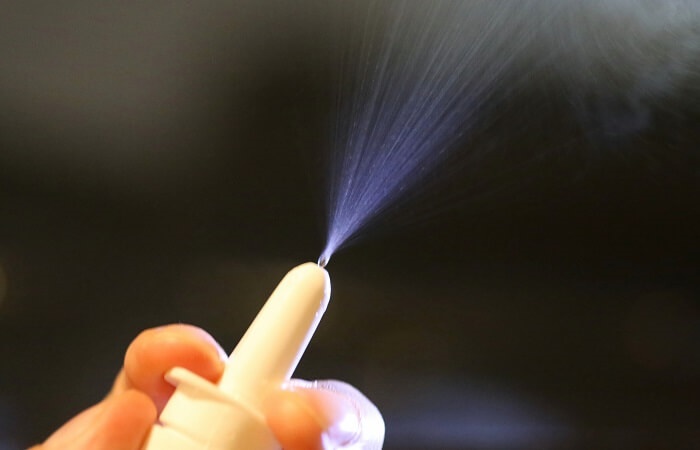Let's Save Lives and Stop Rising Workplace Overdoses
Medications now available over the counter can help prevent increasing workplace deaths.
Medications now available over the counter can help prevent increasing workplace deaths.

Overdose deaths are on the rise in our workplaces. Data released recently by the Bureau of Labor Statistics confirms this alarming trend. Last year, 525 people died from overdoses at work – up 13% from the year before. This number has risen a staggering 619% from 2011.
The overdose crisis in this country – fueled by a surge in the presence of fentanyl in drugs – has reached a boiling point, with nearly 300 people losing their lives every day.
While putting an end to the overall opioid epidemic is complicated, stopping an overdose is surprisingly simple. With just a quick nasal spray of naloxone, an opioid overdose reversal medication, a person experiencing an opioid overdose can literally be brought back to life. The spray is now available over the counter, enabling everyone – whether at home, in the community or at work – to save a life.
As simple as this life saving measure is, we're finding that many businesses are not prioritizing having it on hand and training employees to use it. What is behind this?
Lack of awareness, as well as a lingering societal stigma, are partially to blame. In speaking with employers, agencies and organizations these past few months I have heard from many that substance use is not happening in or impacting their workplace, and from many others who had no idea it was impacting workplaces at all.
The stigma side manifests in a “not in my workplace” mentality, which belies an undercurrent of bias about the type of people who use substances – unemployed – and the proximity of the problem – not anyone I would know.
Unfortunately, the numbers tell a different story. First, 17% of U.S. residents, or 48.7 million people, have a substance use disorder. That makes substance use more common than being left-handed or having green eyes.
These are people we know – our friends and children, neighbors and coworkers. They have families and volunteer in their communities. And they have jobs – in fact around 66% of adults with substance use disorders are employed.
If stigma is one side of the coin, lack of awareness is the other. Many employers I’ve spoken with are shocked to hear these statistics. They know about the rising overdose numbers overall but have no idea it is happening in workplaces. Not surprising, given the scope of what CEOs and leaders have dealt with over the past three years, including the pandemic, economic headwinds, worsening mental health and more. But at a time when nearly 10% of all workplace deaths are due to overdoses, we cannot afford to let this risk remain hidden. We must acknowledge this crisis is impacting workplace safety.
Of course, employers do not own the responsibility for solving the opioid epidemic. There are no quick fixes to this crisis, which involves the medical and pharmaceutical fields, public health, policy and so much more. Individual recovery is a long process and looks different for everyone.
As employers, however, we must recognize where we do bear responsibility: in helping ensure no one dies at our workplaces of an overdose. Having naloxone onsite and training employees to administer it is simple, affordable and can help workplaces give someone a second chance at life.
By doing this, we are not causing employees to overdose more frequently, any more than having ibuprofen causes workers to get more headaches. Nor are we saying an overdose will certainly occur on company premises, any more than having an onsite AED means a heart attack will happen. We are merely preparing for the possibility of an emergency, in this case an overdose, and giving coworkers the skills to stop it.
Over 100,000 people died from drug overdoses in 2022. That’s close to the populations of entire cities like Boulder, Colorado; South Bend, Indiana; and Quincy, Massachusetts. Having naloxone available and training people how to use it is a vital first step in keeping people – the people who will overdose next year, the year after that, and the year after that – alive. Responding to such an emergency is a skill that does not disappear at the end of a shift; our workers carry it with them wherever an overdose may occur, including their neighborhoods, homes and communities.
The history of our nation is replete with examples of tragedy giving way to change. The sinking of the Titanic led to reforms around lifeboat capacity, disaster drills and 24-hour radio monitoring. The Triangle Shirtwaist Factory fire gave rise to labor laws that protected the safety of workers (and prompted business leaders to form the National Safety Council). The COVID-19 pandemic saw the fastest creation and rollout of a vaccine in human history.
Employers and businesses must be prepared for an emergency overdose and help stem this tragedy. Let’s be part of the change.
Let’s get naloxone at our workplaces. Let’s train every employee on how to use it.
Lives depend on it.
With a century-long legacy, the National Safety Council is a global center for safety expertise. Let's work together to align resources. We look forward to learning about ways we can join efforts to expand safety everywhere!
There are no items in your cart